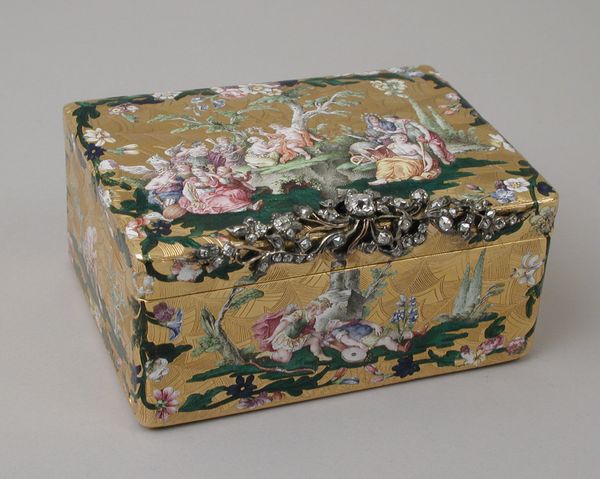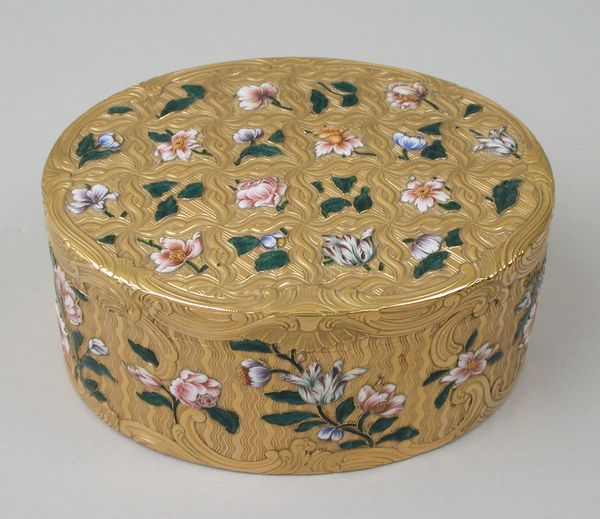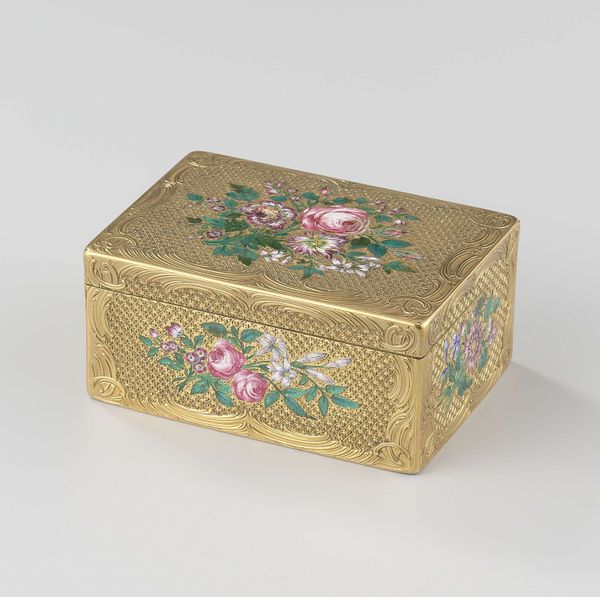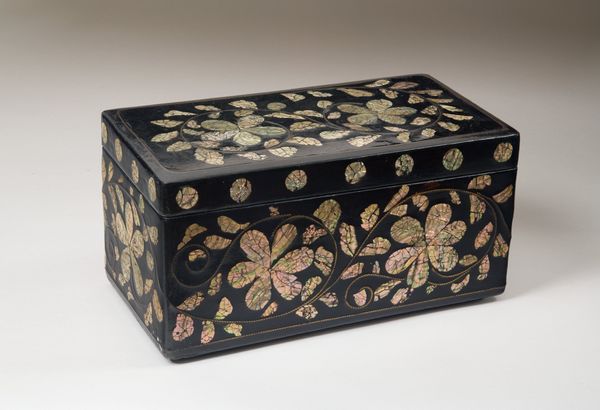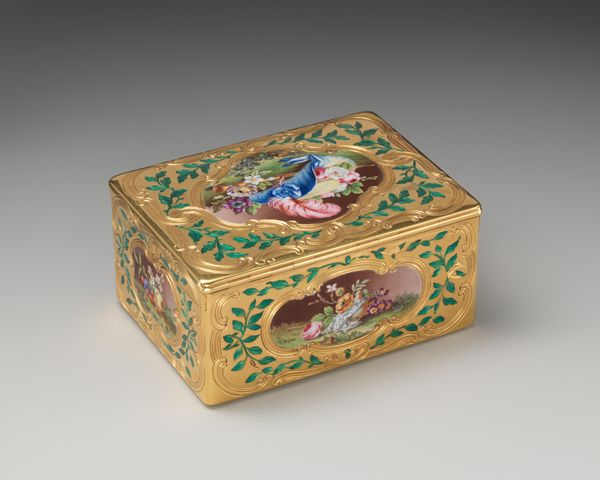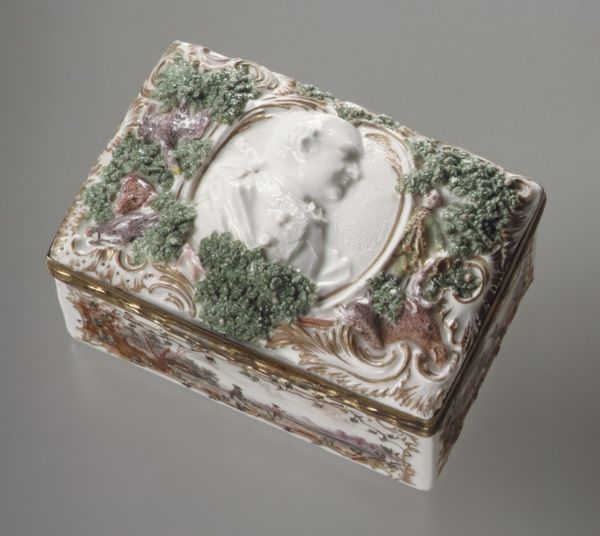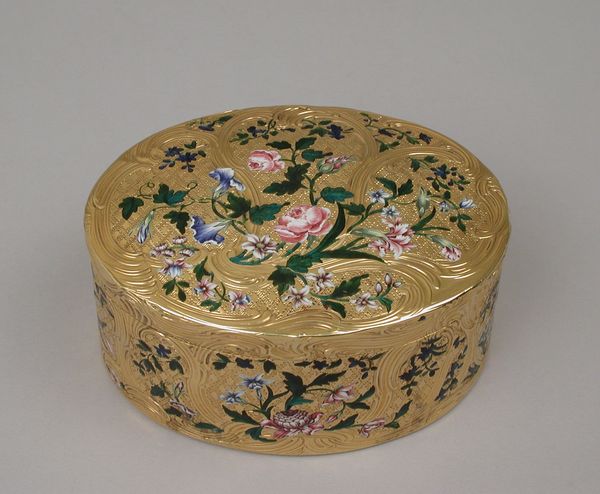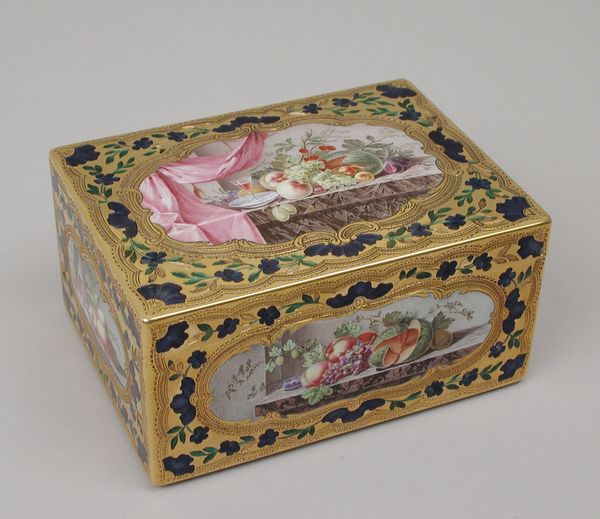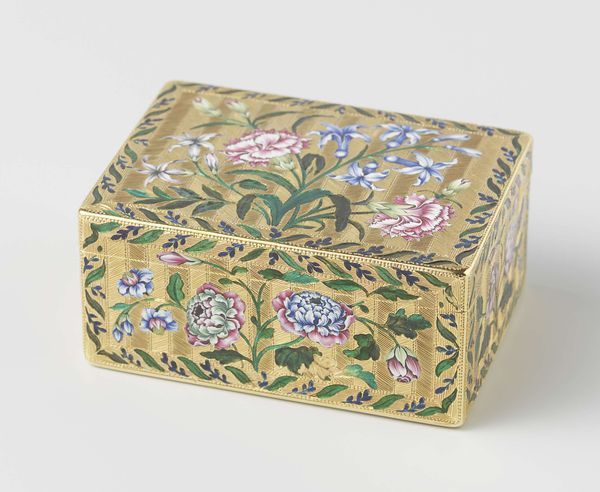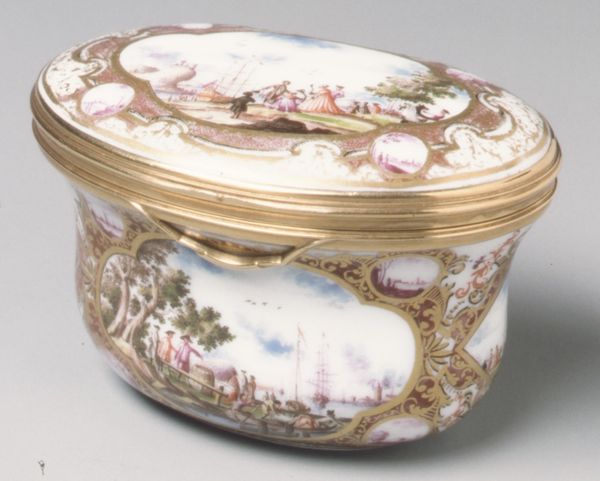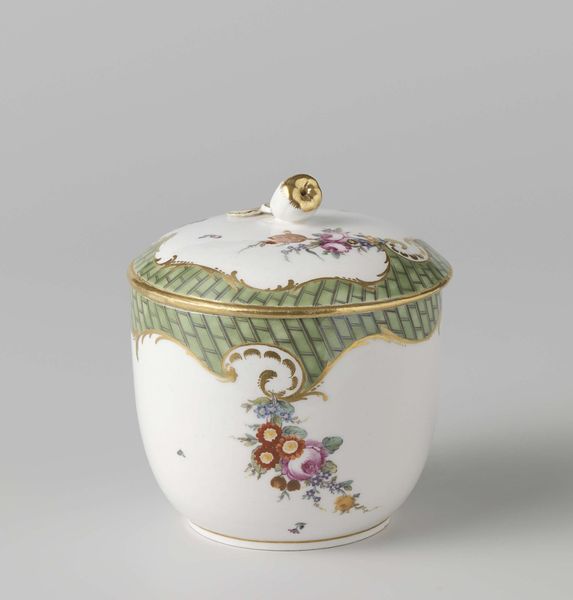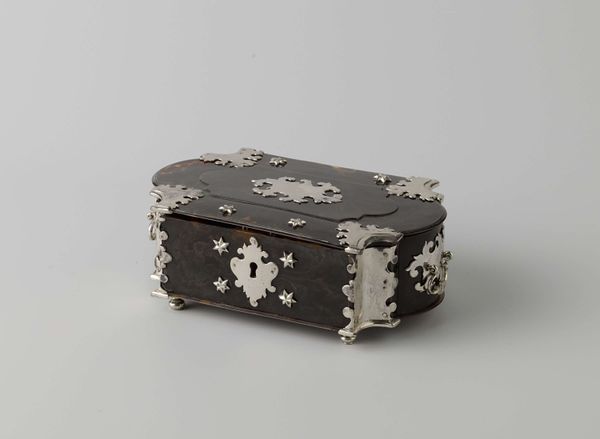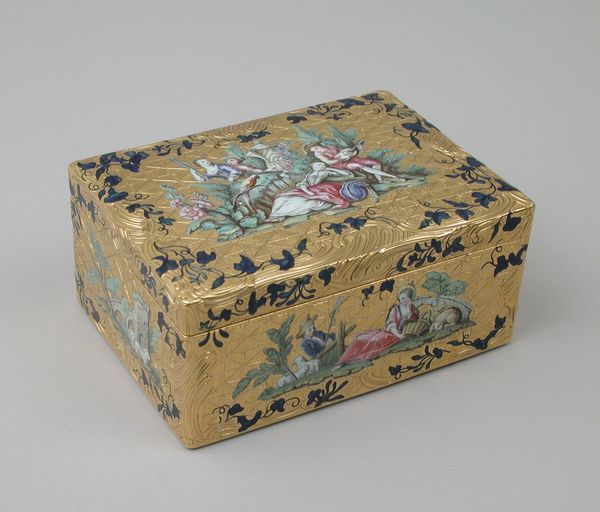
ceramic, porcelain, sculpture
#
asian-art
#
ceramic
#
porcelain
#
figuration
#
sculpture
#
ceramic
#
decorative-art
#
miniature
#
rococo
Dimensions: 1 1/2 x 2 5/16 x 2 15/16 in. (3.8 x 5.9 x 7.5cm)
Copyright: Public Domain
Curator: Welcome! Today, we are observing a porcelain snuffbox, crafted between 1745 and 1755 by the Meissen Manufactory. The box resides here at the Metropolitan Museum of Art. Editor: It’s quite ornate, almost excessively so. The hard, glossy surface contrasts intriguingly with the detailed, textured inlays. I find the color palette somewhat overwhelming at first glance. Curator: The flamboyance reflects the era it comes from, Rococo. Snuffboxes such as this became associated with status, luxury, and courtly life. The aristocracy carried them to display wealth and refinement. Editor: I see how the curves and asymmetrical design lines fit perfectly into the Rococo style, also, how miniature depictions of scenes decorate all faces of the small box with no empty space at all. The detailed craftsmanship for this size of object is mesmerizing. Curator: Meissen porcelain was highly sought after throughout Europe at the time. The presence of Chinoiserie elements in the decorative schema suggests the craze for East Asian goods. Aristocrats liked displaying their knowledge and engagement with global cultures through the ownership of things such as this little container. Editor: Those are fascinating elements to consider. The miniature scale is still impressive; its creation must have involved immense skill and precision to achieve such intricate details within this confined area. Curator: Indeed. The narrative imagery offers glimpses into a romanticized version of foreign cultures. However, that presentation was, undeniably, shaped by European interests. It also indicates trade routes and intercultural exchange happening during this time. Editor: I perceive a disconnect between its physical purpose as a container and its overt aesthetic ambitions. It almost transcends the mundane role of holding tobacco and enters the sphere of high art due to that tension. Curator: You're right. Though utilitarian, its societal implications and artistic execution turned it into more than just a box; it became an emblem of privilege and artistry. Editor: Looking at the craftsmanship and pondering its place in cultural history offers insight to the social meanings that an object can gain. Curator: Indeed, let's proceed and think about the narrative they reflect.
Comments
No comments
Be the first to comment and join the conversation on the ultimate creative platform.
